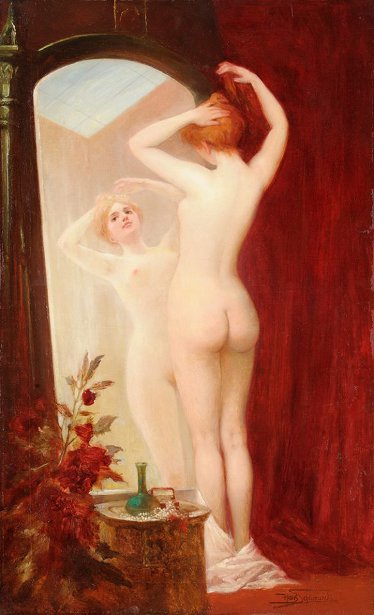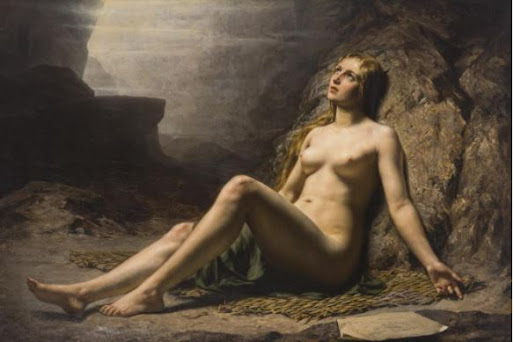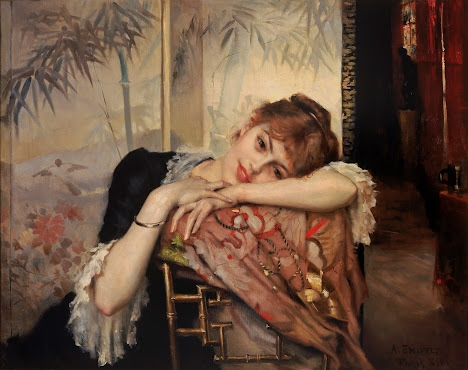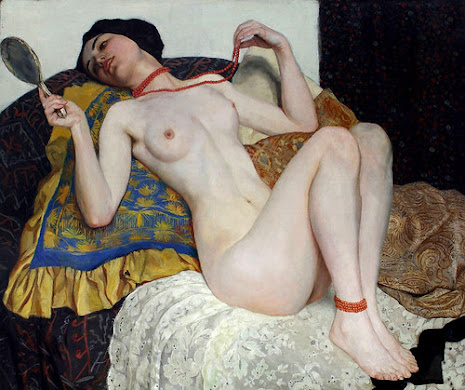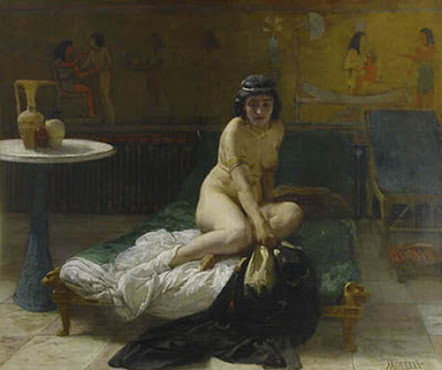PRB

La Japonaise au bain/The Japanese Bather (c. 1865), by James Tissot (1836-1902). Musée de Dijon, France. The model Tissot used for this work was not a Japanese girl but a Parisian model dressed in a kimono. This painting which some would declare as being slightly pornographic was his only depiction of a female nude. Life Study (Study of an Egyptian Girl), John Singer Sargent, 1891, Art Institute of Chicago: American Art It holds the distinction as the only known oil nude of a female that Sargent ever presented. Imposing painting at 6' 1" tall. The identity of the woman who posed in Cairo for this full-length figure study is not known. Omphale, John Bram Liston Shaw, 1914, watercolor. Queen Omphale asserts her authority by donning the lionskin on the Nemean lion, and holding Hercules' the club. The labors of Hercules are in the background. Byam Shaw ignores the figure of Hercules altogether, showing a triumphant and erotically-charged Omphale (1914), against a background o...
